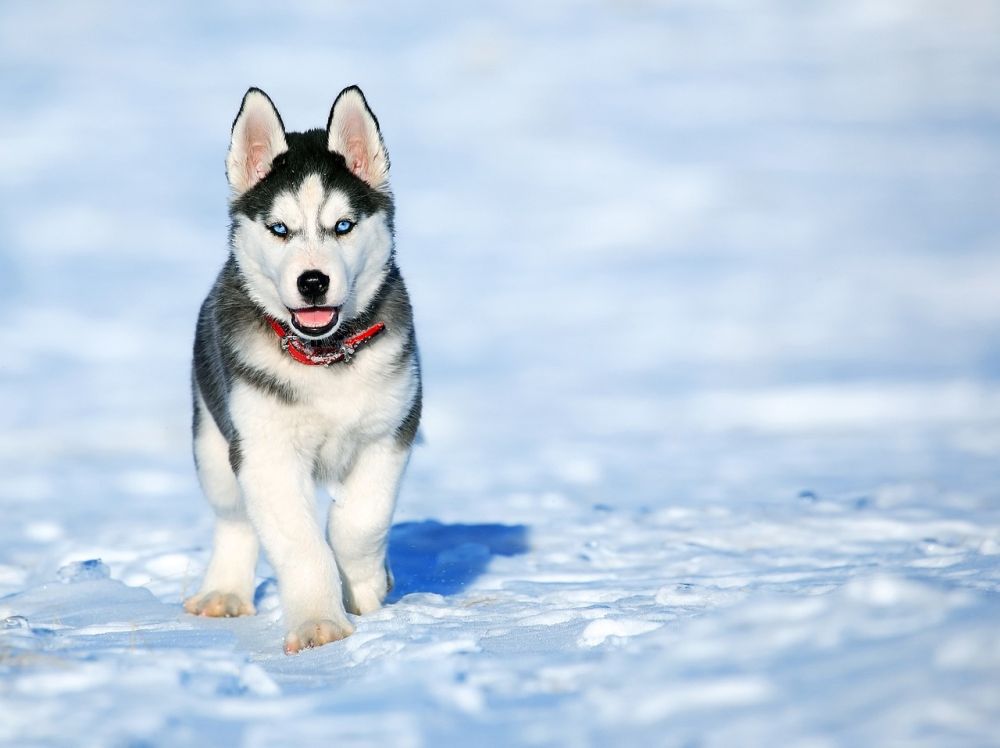
Dog Breed Guide: Siberian Husky
With their wolf-like looks and their often striking eyes, it’s no wonder that the Siberian Husky is so often the star of so many posters and internet memes! However, it’s their friendly nature, fun personalities, and easy nature that make them so beloved by families around the world.
Huskies often conjure up thoughts of wolves and winter wonderlands, but while it’s true that they originated in snowy climates, the wolf connection definitely stops at looks. In fact, these are some of the friendliest, goofiest fluffballs you’re likely to meet, and if you’re expecting a great watchdog that is aloof and independent, you had better keep looking!
History of the Siberian Husky
Siberian Huskies were actually bred in northeast Asia by the Chukchi people. Of course, their original role was as a sled dog, and they’re still used in this age-old role in parts of the world.
The breed is a very old one, and because of this and the lack of written history, it’s almost impossible to pin down the full origin story of the breed. What we do know is that they first gained popularity and renown in the west in Alaska in 1909, when a team was imported to take part in the All-Alaska Sweepstakes sled race.
The dogs were, of course, born for this type of race, and they excelled, becoming world-famous as sled dogs.
In the 1930s, they were recognized as a breed by the American Kennel Club, and a decade or so later, many of these dogs served in the Allied forces during WW2!
Today, they are one of the world’s most popular choice as a family dog, and their striking good looks and fantastic personalities mean that that trend is unlikely to change any time soon.
General Physical Characteristics of Siberian Huskies
Huskies are a medium-sized breed, weighing between 35 and 60 lbs. and measuring about 20 to 24 inches. Females are smaller than males, and because of their thick fur, they do tend to look a lot chunkier than they actually are!
Their long, thick coat is part of their appeal, but it does require a fair amount of maintenance, and many owners find that during the warmer summers in Canada, a trip to the groomer for a shave makes them a lot more comfortable!
Huskies have almond-shaped eyes that can be striking blue, yellow, or brown, or even two completely different colors, and they have very distinctive markings on their faces, usually with a white muzzle right up to their “eyebrows” and a heart-shaped band of darker color above.
As sled dogs, these working dogs also need a fair amount of exercise, and a sedentary lifestyle can soon result in pudginess.
Temperament and Character of Siberian Huskies
Huskies are adventurers. They were bred for it, and they still live it today.
They’re fun, funny, happy dogs that are curious and often mischievous, and while they can be trained, you may find that they are much happier joking around than listening to commands!
They can be escape artists and wanderers, so you will need to make sure they are well-secured in your yard and home when you’re not around.
Huskies are generally easygoing and accepting of other pets and great with children, but they can be standoffish or aggressive with unknown dogs, as the epitome of pack dogs, they do much better when they are not only dogs.
Be warned that Huskies do howl. It’s one of the things they are known for, and they will howl if they are left alone or ignored for too long. So be prepared to make this furry favorite an integral part of your life!
Lifespan of the Siberian Husky
Huskies typically live between 11 and 13 years.
Common Health and Personality Issues in Siberian Huskies
Siberian Huskies are generally very healthy dogs. There are a few diseases and disorders that are common in the breed, however, including:
- Eye problems including progressive retinal atrophy (PRA), cataracts, and corneal dystrophy. Be sure to have your veterinarian check your dog’s eyes during every visit so you can catch any problems early on.
- Hypothyroidism is an underactive thyroid gland.
- Hip dysplasia, although it’s not common in the breed.
Finally, remember that Huskies are bred for life in the cold, wintry climates of the far north. So, while they are quite happy to frolic in the snow (and will at every opportunity), they don’t cope well with too much heat. Be sure to brush out that thick undercoat in summer, or consider having very thick coats trimmed or shaved. They may not look as majestic without their fur, but Huskies sure are a lot happier that way!
